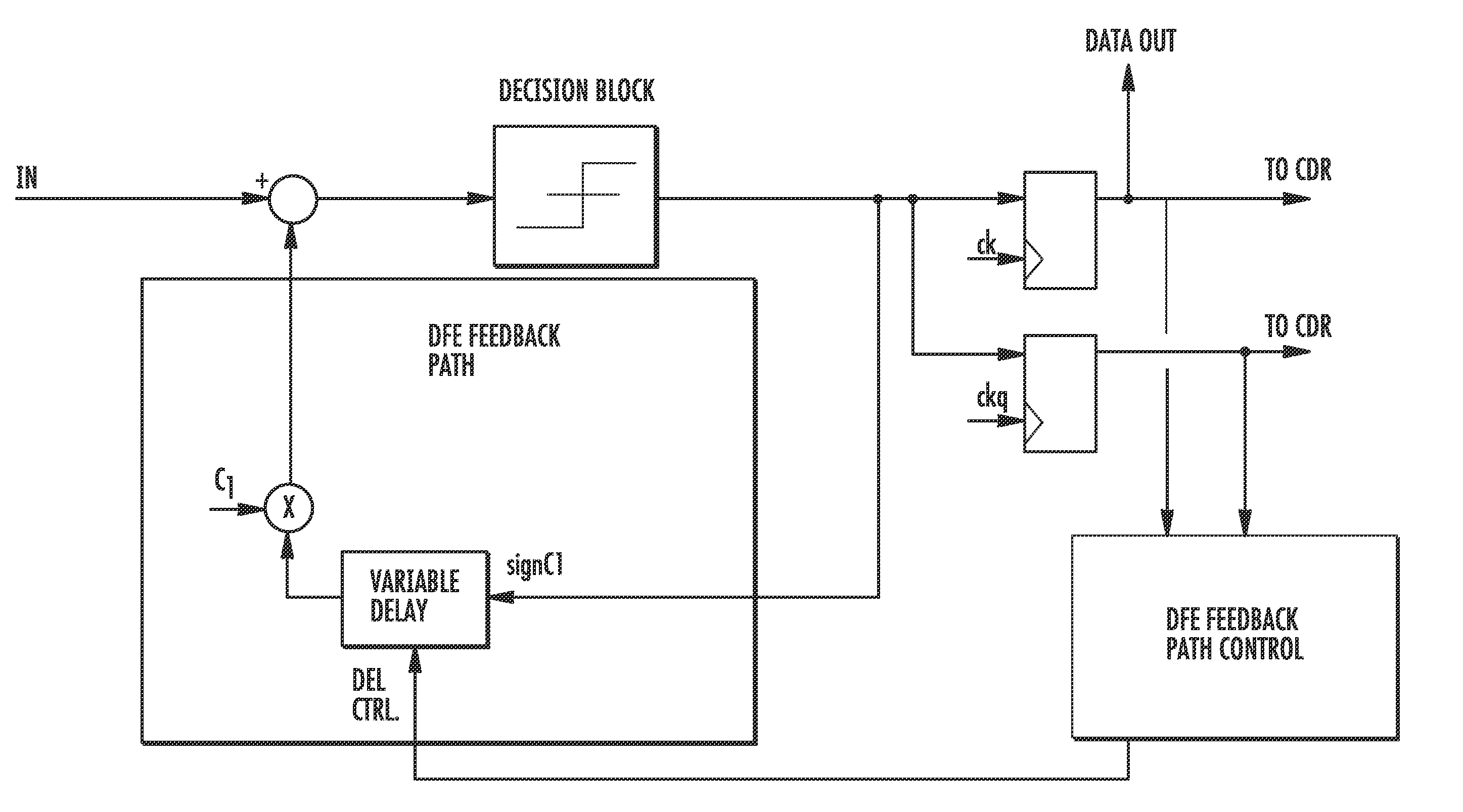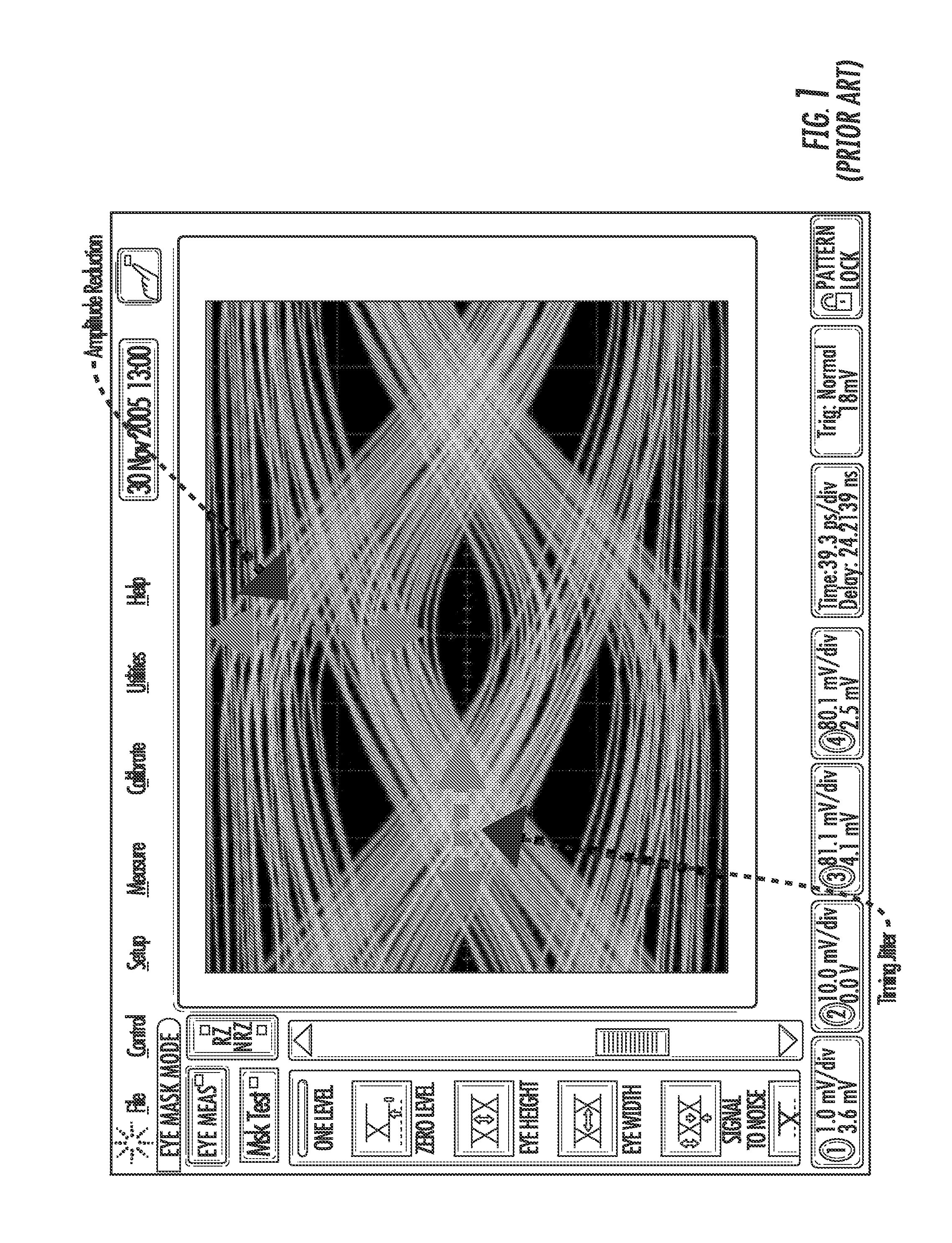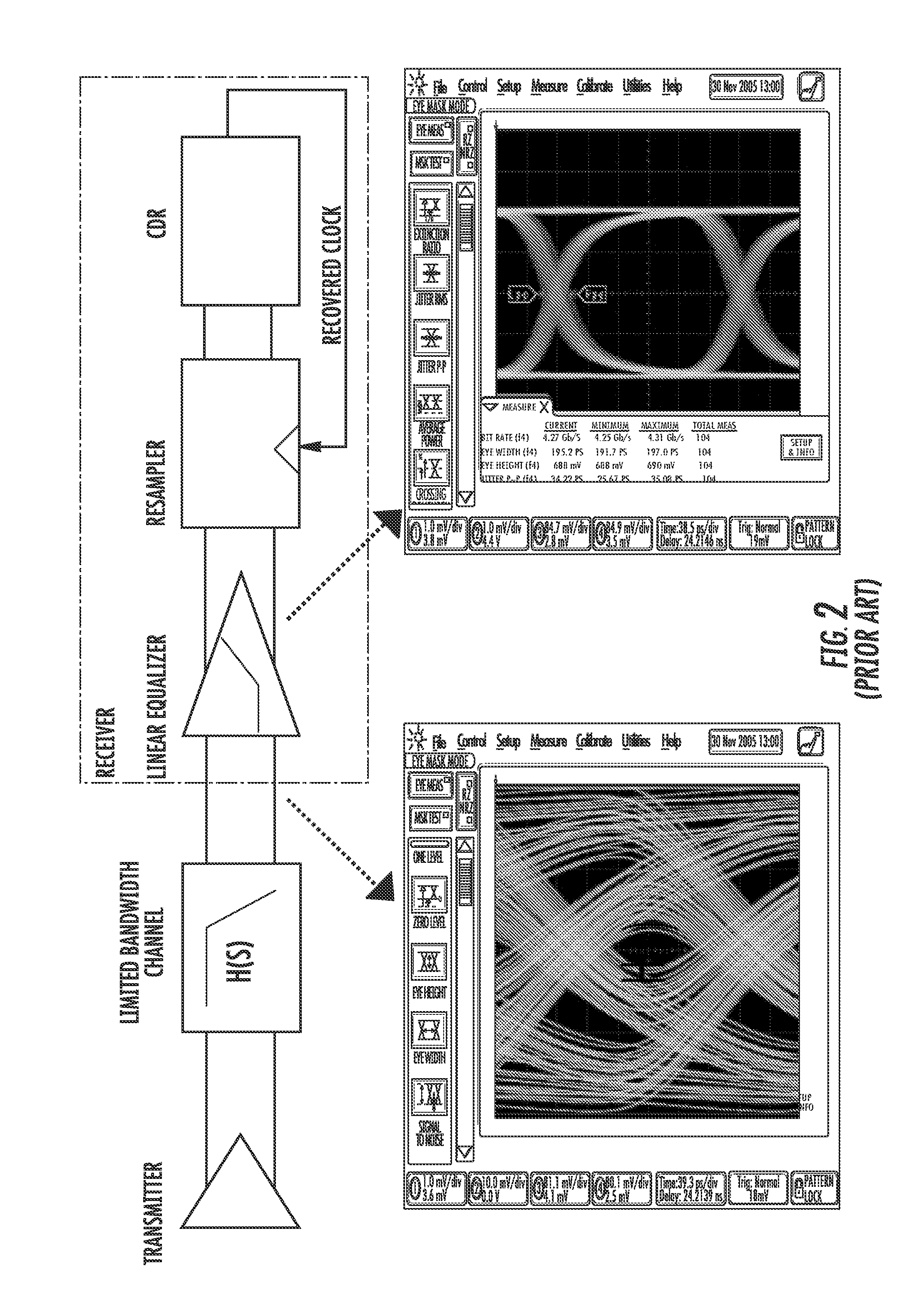Enhancement of transition region equalization in a decision feedback equalizer
a transition region and equalizer technology, applied in equalizers, transmission, electrical devices, etc., can solve the problems of affecting the ability of the eye to correctly recover the incoming signal (bit), data receivers may receive significantly distorted signals, and increase the probability of an erroneous recognition of received bits, so as to reduce the unbalance
- Summary
- Abstract
- Description
- Claims
- Application Information
AI Technical Summary
Benefits of technology
Problems solved by technology
Method used
Image
Examples
Embodiment Construction
[0057]FIG. 9 illustrates how early-late information is obtained in a common circuit block CDR, highlighting how the operation is practically equal to sensing an equality or a difference between the sampled value (sign) with the clock cki+1 and the value (sign) sampled with the clock ckqi when a transition occurs.
[0058]The main architecture of the enhanced DFE is depicted for an exemplary application to a non-synchronized embodiment of the DFE, as illustrated by the block diagram of FIG. 10. In this illustrated embodiment, a single correction step is contemplated (through a first pre-estimated coefficient).
[0059]The DFE feedback signal path may be represented as receiving the sign value of the previous bit (sign_C1) and feeding back this value to the input of the DFE circuit multiplied by an estimated coefficient c1 after passing through a variable delay circuit VARIABLE DELAY controlled by an appropriate control circuit DFE FEEDBACK PATH CONTROL.
[0060]A sign_C1 signal representing t...
PUM
 Login to View More
Login to View More Abstract
Description
Claims
Application Information
 Login to View More
Login to View More - R&D
- Intellectual Property
- Life Sciences
- Materials
- Tech Scout
- Unparalleled Data Quality
- Higher Quality Content
- 60% Fewer Hallucinations
Browse by: Latest US Patents, China's latest patents, Technical Efficacy Thesaurus, Application Domain, Technology Topic, Popular Technical Reports.
© 2025 PatSnap. All rights reserved.Legal|Privacy policy|Modern Slavery Act Transparency Statement|Sitemap|About US| Contact US: help@patsnap.com



